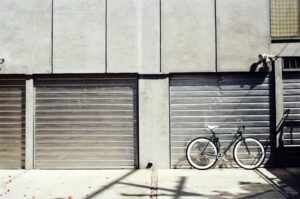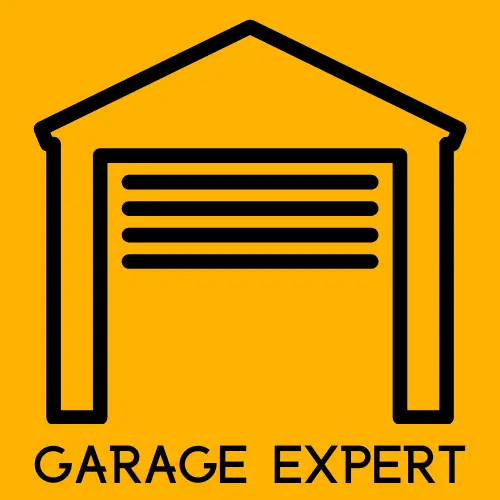
It can be discouraging when you encounter an issue with your garage door. If your garage door won’t open, it implies that your vehicle may get stuck in the garage.
If you don’t have any idea of what to do, a stuck garage door would mean that you have to make a costly call out to an expert to repair the problem. Nonetheless, what if you can avoid this? You’ll save a lot of time and money if you can solve the issue yourself.
In this article, we’ve discussed how to diagnose issues with your garage door. Let’s jump right in!
Garage Door Binds Bows in the Middle when Closing
There are a couple of factors that make a garage door bent in middle. In several instances, basic exposure to weather elements and unsteadiness in temperature may lead to bowing.
In other instances, the garage door’s weight and an automatic garage door mounted at the middle of the garage door could lead to bowing. Usually, wooden garage doors are more prone to bow as a result of weather conditions. However, all garage doors can be predisposed to bowing because of a centralized garage door opener.
Usually, if a garage door is bent, it’ll not fit well in the rails on the sides of the garage door. This issue may appear mild at first, and you can keep on elevating and lowering the garage door with only mediocre resistance.
Nonetheless, if the issue worsens, the pressure exerted on the rails because of the bowing garage door, can stop the door from lifting or lowering. The rails can release, and this causes a safety concern to anyone near the garage door.
Garage Door Sagging in Middle
As garage doors get older, they start to appear a bit less unsullied than they used to be. In numerous instances, it implies sanding and then repainting. Nevertheless, if your garage door is metallic or wooden, you may observe that it begins sagging.
Sagging can take place on one side or at the center. However, either way, garage door sagging is a problem that you have to deal with immediately. If you handle it instantly, you can repair your garage doors.
It can be as easy as changing out the panel rather than the whole door. However, regardless of the reason for the sagging, you’ll need an expert touch to it. If you don’t attend to it, sagging garage doors become costly to repair.
Garage Door Pops when Opening
You may notice your garage door making a popping sound when it opens. It could be caused by the torsion springs. Many garage doors come with large torsion springs to assist in opening the door. Over time, the spring coil may lock and hinder the smooth running of the garage door. It’s what causes the popping sound.
The spring must be lubricated using engine oil and cleaned using a desiccated cloth. Also, don’t try to lubricate the torsion springs on yourself – rather, let a trained technician do the job.
Garage Door Bent off Track
There are several ways this can take place. Here’s a couple of them. If any of them have taken place or you’ve observed any signs of a bent off track, carry out an examination instantly.
- Collision
- Impediment
- Age
- Broken cable or drum
You may notice a crooked or misaligned garage door track before it leads to further damage to the rest of your garage door system. Carry out a visual examination of the tracks if you encounter any of the above issues.
Garage Door Limit Switch Problems
The opener limit button informs the garage door when to stop operating. Wrongly set limit buttons can stop the garage door from closing or opening completely. To diagnose limit button issues, open the garage door and watch carefully how it opens.
If the garage door opens and halts around halfway or 5 feet above the floor, the up limit has to be rectified. Measure the height from where the door halts when it’s opening. You’ll use the measurement to reset the up limit button on your garage door opener.
Use the opener to close the garage door and watch carefully when it’s closing. If your garage door doesn’t close completely, or starts closing and then reopens, the down limit button has to be rectified.
If the garage door doesn’t close completely, measure the distance of the hiatus from the base of the garage door to the driveway or the ground. You’ll use that measurement to reset the downward limit button.
Garage Door Wall Switch not Working
A dead wall button may appear as if it’s the end of the road for your garage door opener. However, it’s probably a power issue that can be solved. Since the wall button is connected directly to the garage opener, you don’t have to reprogram or diagnose signal problems.
If your wall button is faulty, the probable culprit is either the wiring or the button itself. Many switches come with two cables. Detach both from the button and cautiously touch them together. If the garage door opener reacts, the switch could be the problem. If nothing happens, you’ll need to purchase new cables and replace them using 18-22-gauge cables.
Garage Door only Closes when Holding Button
Once you choose to leave for the day, your garage door opens well. When tapping the remote control to close your garage, the door moves a little, and then all of a sudden, the garage door goes back up.
After a bit of disappointing experience, you find out that the door doesn’t close completely until you hold down the button on the wall. Although you may look at your remote as the problem, the particular issue is with your garage door itself, or more specifically, the security sensors at the base.
If you have a contemporary garage door, this problem may arise when your security sensors suffer these problems. These sensors stop the garage door from closing on you by turning it around if something crosses the sensor.
Nonetheless, nothing should be obstructing the sensor’s path for them to cause this problem. If your garage door doesn’t close until you hold down the wall button, you can attempt several options.
- Inspect to see if the sensors are obstructed, particularly by unsuspecting rubble.
- Examine for unclean sensor eyes.
- Check the engine head or the sensors themselves for loose cables.
- Examine alignment.
Most commonly, something may have tapped the sensor and put it out of alignment. Nevertheless, you should also note that at times having direct sunlight shining on the sensor may affect. You may want to attempt closing it later in the day when the sun is shining in your garage.
Although you can wipe off a dirty eye and move rubble by yourself, unluckily, you need an expert touch when it comes garage door won’t close sensors are aligned.
Garage Door Leaves Gap at Bottom
You have mounted your new garage door efficiently. You’re through with everything and it’s ready to be used – except that you’ve observed a gap between the wall and your garage door.
You can’t just turn a blind eye on it as you know that the gap can be an invitation to unwanted visitors such as rodents and other creatures who may ruin your garage.
Additionally, weather conditions can affect the items stored in your garage through rainwater, snow, or heat entering your garage through the gap in your walls, door, and along the ground. If there’s a gap in your garage door, the best thing is to fix it and seal it with immediate effect.
After mounting the garage door, you have to search for gaps that you may have overlooked during construction. Some of the spots you can check on comprise:
- The top of the door and the sides
- Gaps along the door’s bottom part
After you’re done checking your garage for gaps, it’s time to buy the materials required to fix the issue.
Garage Door won’t Open with Keypad
If your keypad isn’t working well, it might be easier to fix it than you think. Some of the things you can check in your garage door keypad if it isn’t working well include:
- Inspect the batteries in the remote control keypad of your garage door.
- Check the condition of your keypad.
- Check for frayed cables.
- Examine if there are stuck keys.
- Check if there are issues with your pin co
Conclusion
A little troubleshooting of your garage door goes a long way in maintaining your door’s construction and performance. Garage door fixing and yearly maintenance is usually due to the number of cycles your garage door withstands with everyday use.
Though there are repairs and maintenance that you cannot deal with on your own, there are several issues that you can repair yourself. The sooner you diagnose the problem, the less damage and cost you’ll incur because you’ll fix it instantly.
How to Keep a Garage Cool for Dog
Contents

